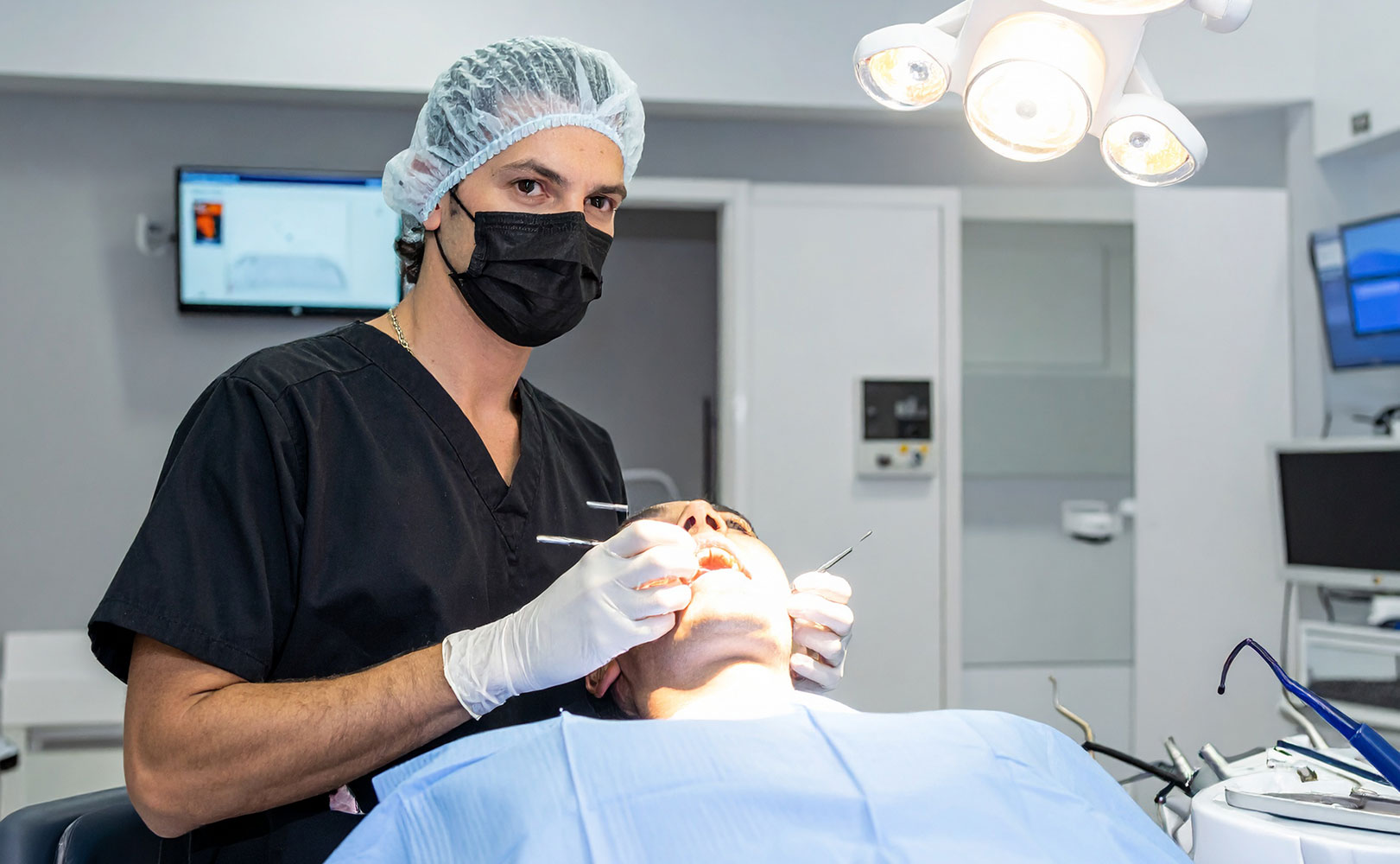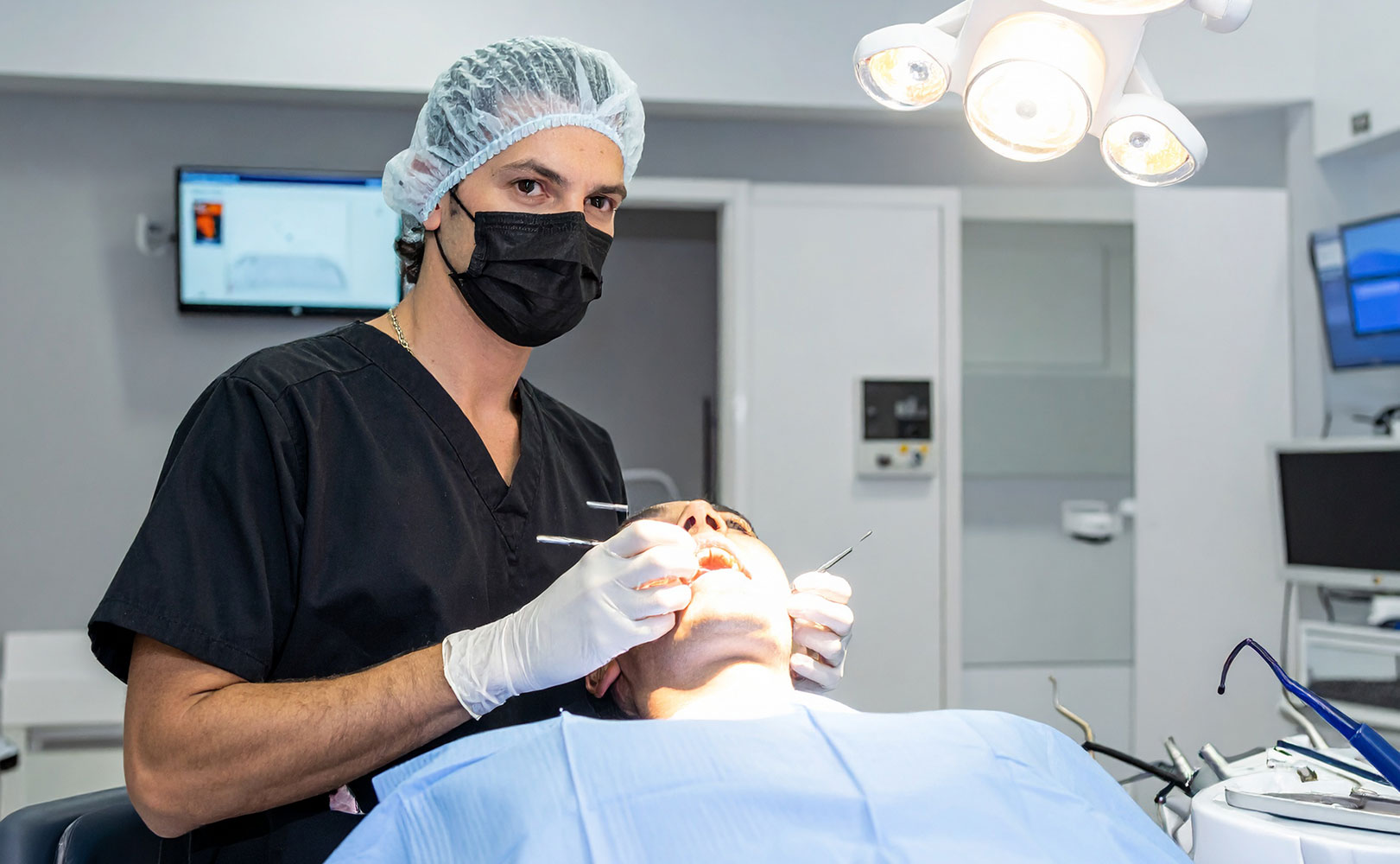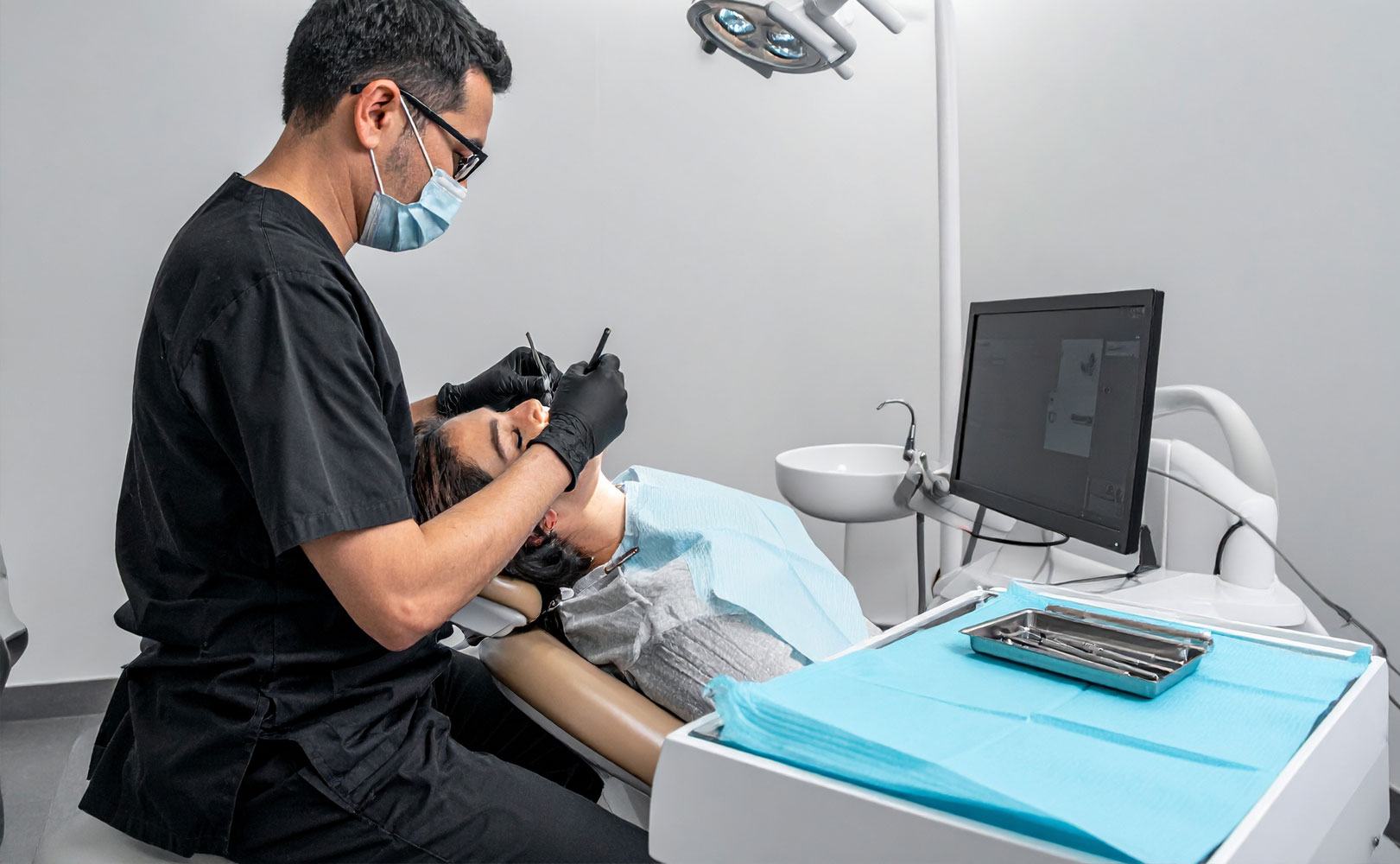Surgical Extractions
Safe and precise removal of teeth that cannot be extracted through simple procedures, ensuring comfort and proper healing.
Surgical extractions are dental procedures performed when a tooth cannot be removed using standard extraction methods. This is often necessary when teeth are broken at the gum line, have not fully erupted, or are impacted. Unlike simple extractions, which remove visible teeth with minimal effort, surgical extractions require a more advanced approach to protect the surrounding bone and tissue.
When is a surgical extraction needed?
A surgical extraction may be recommended in the following cases:
- Impacted teeth – Teeth trapped beneath the gums or bone, such as wisdom teeth.
- Broken or fractured teeth – Teeth that have broken at the gum line and cannot be gripped.
- Severely decayed teeth – Teeth with damage extending below the surface of the gums.
- Overcrowding – When space is needed for orthodontic treatment or to improve alignment.
What to expect during treatment
Your dentist or oral surgeon will begin with a thorough examination, which may include x-rays to assess the tooth’s position. Surgical extractions are performed under local anesthesia to ensure comfort. In some cases, sedation may also be offered for patients with dental anxiety. The procedure involves making a small incision in the gum to access the tooth. If necessary, the tooth may be divided into sections for easier removal.
Recovery and aftercare
Following the procedure, patients are given post-operative instructions to promote proper healing and minimize discomfort. This includes managing swelling with ice packs, taking prescribed medications, and maintaining good oral hygiene while avoiding the extraction site during brushing. Most patients recover within a few days, with the gums and bone healing completely over several weeks.
Why surgical extractions matter
By safely removing problematic teeth, surgical extractions protect your oral health, prevent infection, and restore comfort. Early treatment ensures smoother healing and helps maintain the natural alignment and health of your remaining teeth.







